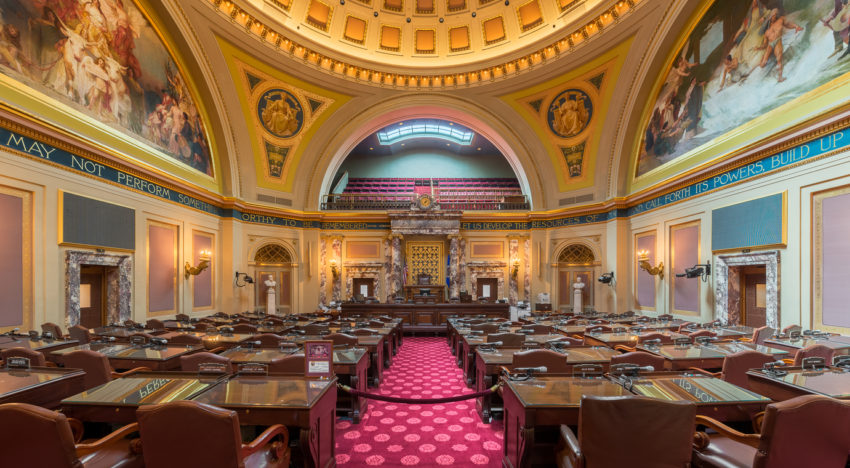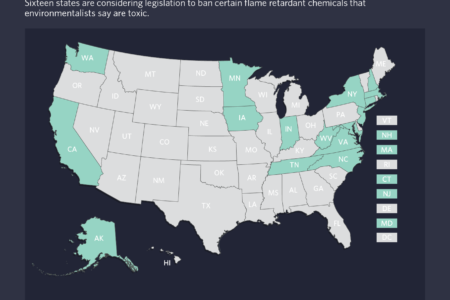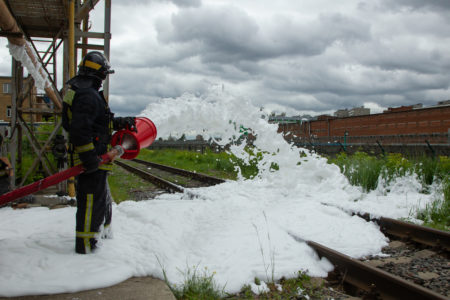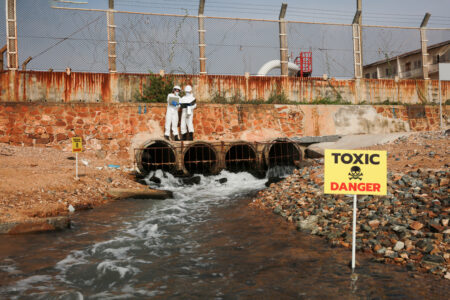
Share On Social!
When alarmingly high levels of perfluoroalkyl and polyfluoroalkyl substances (PFAS) contaminated Bemidji, Minnesota’s (5.4% Latino) water, the city shut down two of its five wells.
The city is planning to build a new $2 million well to ensure clean water.
State lawmakers saw the harm PFAS, which are used as flame retardants, pose. So, the Minnesota (1.5% Latino) legislators passed a bill that bans those health-harming substances in many products used by consumers. Even worse, when those items catch fire, they release noxious fumes into the air, which harms firefighters throughout the country.
“What we’ve learned over time is that those chemicals actually don’t do much as far as fire protection,” Rep. Jamie Becker-Finn, one of the bill’s authors, told Minnesota Public Radio (MPR). “But what we do know now is when they burn, they release toxins into the air and then firefighters are really exposed to those chemicals.”
What the Bill Does (and Doesn’t) Do
Last month, Gov. Tim Walz signed the state-wide act last month following a successful vote in the state’s House. 
This legislation follows in step with other states and cities across the U.S. who are passing regulations on firefighting chemicals.
Minnesota’s version will prohibit flame-retardant chemicals in residential-consumer products.
Still, it does not prevent the use of other products, such as chemically-treated furniture in offices and hotels.
Chemical manufactures pushed back against the bill. They say that a lack of federal intervention should compel states not to pursue PFAS bans; instead, those companies believe state and local governments should wait for Congress to set safety regulations, according to MPR.
While that pushback led to the bill to not be as strong as some might have hoped, it made needed progress in the PFAS issue, Chris Parsons, president of Minnesota Professional Fire Fighters, said.
“We are very pleased with what we got,” Parsons said. “We feel like that we are moving the ball down the field toward the goal of making the workplace for firefighters as safe as it can possibly be, while at the same time protecting kids and the public from these toxic flame retardants.”
Why People are Speaking Up
PFAS’ nickname illustrates its cause for concern: Forever chemicals.

Once manufacturers produce these substances, they will not breakdown over time. Worse, they have a history of contaminating water supplies, food, and consumer products that go to harm people.
PFAS exposure, according to the CDC, can:
- Affect growth, learning, and behavior of infants and older children
- Lower a woman’s chance of getting pregnant
- Interfere with the body’s natural hormones
- Increase cholesterol levels
- Affect the immune system
- Increase the risk of cancer
The Environmental Working Group’s recent findings estimate there are over 600 tainted water sites throughout the U.S. that are impacting 19 million Americans. While the EPA argues against that claim, one thing is clear: PFAS contamination is a wide-spread issue with severe consequences.
The adverse health impacts have significant impacts on firefighters across the country. These public servants show higher levels of cancer development from PFAS exposure.
Worse, some researchers say PFAS don’t do their job.
“The use of flame retardants in furniture, children’s products, electronics enclosures, and building materials provides limited fire safety benefit,” researchers at the Green Science Policy Institute write. “For example, research shows they often delay ignition only a few seconds and can make a fire more toxic. Preventing ignition with fire-safe products such as cigarettes, candles, lighters and smoke detectors, sprinkler systems, etc. is a more effective and healthier way to prevent fires.”
Where the Conversation Goes from Here
Minnesota is one of the many places holding chemical companies accountable and passing chemical legislation.
Advocates are also pushing for government agencies to take significant steps in PFAS regulation. They say people need federal action to protect people from harmful exposure. 
“Polluted drinking water impacts everyone in a community,” environmentalist group Clean Water Action writes. “We need solutions now to protect this precious resource and ensure clean and safe drinking water for all. We need EPA’s help to make sure our states can adequately address PFAS pollution and prevent future contamination.”
Still, experts say legislative intervention could take years to finalize.
People can limit PFAS exposure by:
- Buying less packaged food (popcorn bags, pizza boxes, etc.)
- Buying non-PFAS treated furniture
- Ensuring personal-care products are chemically free
Read about Samarys Seguin-Media and Alaska Community Action on Toxins’ successful efforts to help ban PFAS in Anchorage, Alaska (8.9% Latino).
Learn more about chemical, environmental exposures.
Editor’s Note: This article is part of a collaboration between Salud America! and the Hoffman Toxicant-Induced Loss of Tolerance (TILT) program at UT Health- San Antonio. To find out if you are TILTed due to exposure to everyday foods, chemicals, or drugs, take a self-assessment or learn more about TILT.
Explore More:
Chemical & Toxic ExposureBy The Numbers
1
Quick Survey
Can help you find out how chemically sensitive you are



